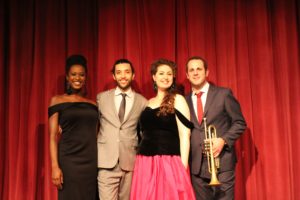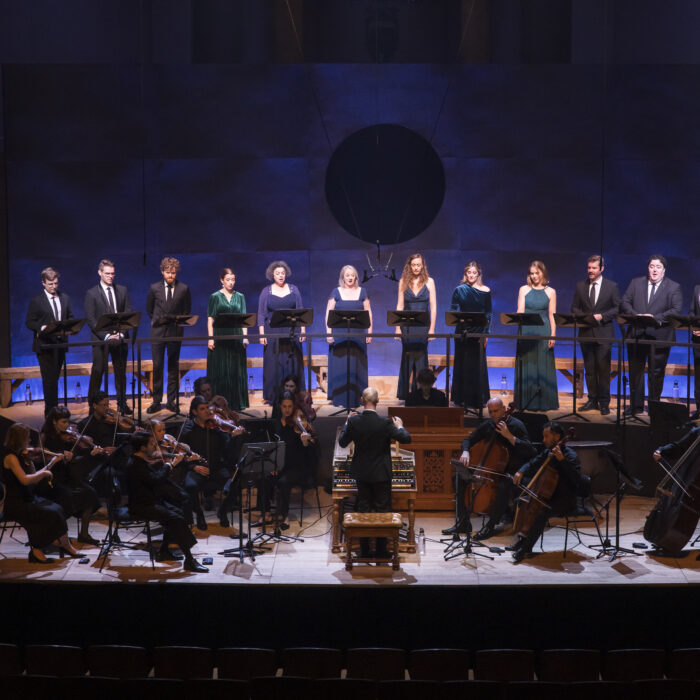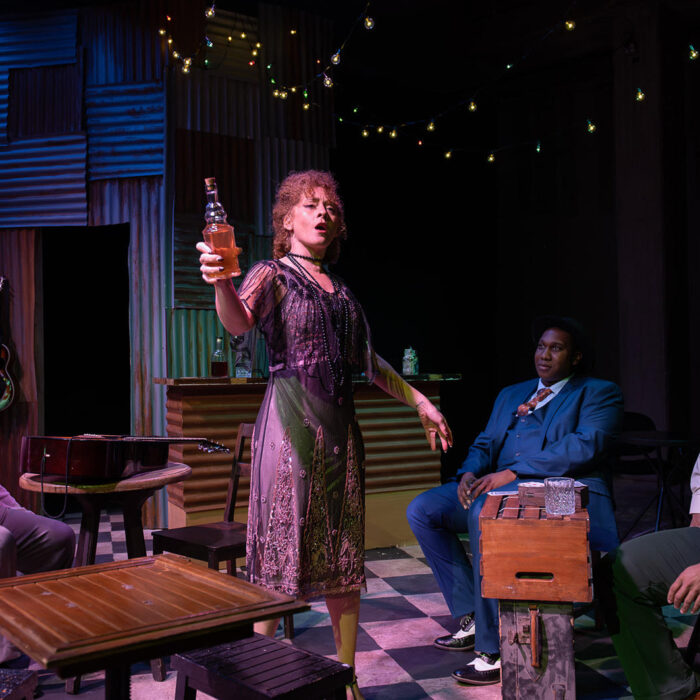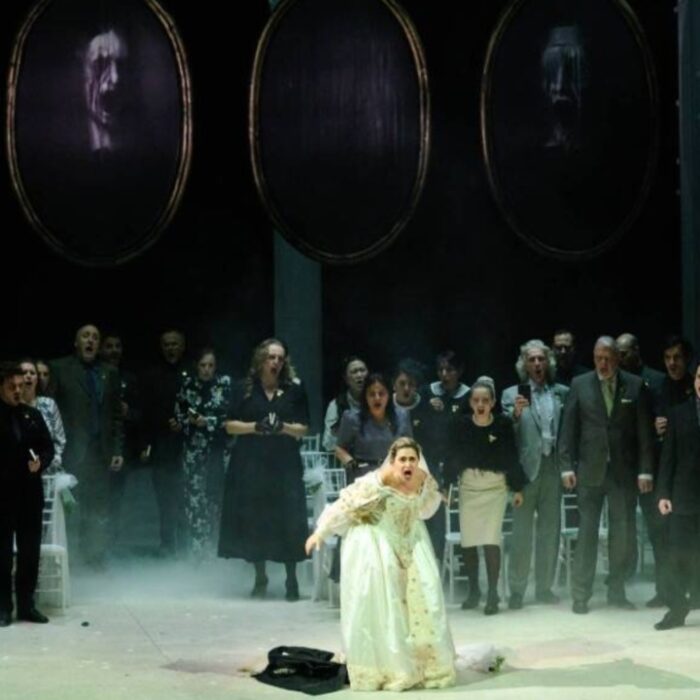
The New Generation Festival Fuses Opera and Jazz in Gala Concert
By Logan MartellOn April 2, 2019, The New Generation Festival held its annual fundraising gala, this time at New York City’s historic Players Club. Founded by Edwin Booth, the club has sought over the centuries to connect performers with the people to share and advance in their love of the arts; among the stunning portraits are hidden some truly fascinating pieces of history, such the pool cue used by Mark Twain and, hidden in a cabinet drawer, even the death mask of Johann Wolfgang von Goethe. In this highly auspicious venue, Tuesday’s gala concert made for an exciting showcase of what the New Generation Festival offers audiences for its yearly festival in Florence, Italy.
Starting the evening’s performance was Kurt Weill’s 1944 lied “Wie Lange Noch?” Following the piano and trumpet introduction, Anush Hovannisyan treated the opening verse with a soulful, spoken quality that beautifully unfolded to sustained phrases. Walter Mehring’s text describes a woman aching to vent her feelings of neglect at the hands of the man she loved above all else. While the German text is little different than that of traditional lieder, the accompaniment carried an infectious jazzy rhythm with colorful chord voicings which, combined with Hovannisyan’s classical soaring vocality, made for a highly pleasing contrast. As these dramatic anguishes built, Hovhannisyan also employed lower meaty growls to tinge her phrases with sufficient bitterness. Her tremendous finish was followed by Picard and Farinacci’s wild, dissonant, almost-mocking conclusion.
After this came the “Harlem Stride Medley,” a solo piece by Mathis Picard, with Dominick Farinacci coolly reciting an introduction to the style, elaborating that “The musical heroes of Harlem were the masters of a virtuosic style known as stride, an orchestral piano playing with full, round, and fat chords moving against the right hand. Unlike early jazz or ragtime era players like Joplin, stride players’ left hands often leaped greater distances across the keys, which produced a sound known for wider range in tempo and great emphasis on improvisations. Its practitioners, or “ticklers” like Fats Waller, James P. Johnson, Willie Smith, and Art Tatum, entered a playful competition with one another, engaging in marathons of what the cats would call cutting contests.” What ensued was a stunning display of virtuosic technique, creative flexibility, and musical showmanship from Mathis Picard. As Farinacci’s explanation progressed, the standard, barroom stride began to alter with unexpected chords, quick melodic runs, and other complexities. After hammering away at chords, Picard reached into the piano to strum at its strings with his right hand like a gritty guitar, even knocking on the piano’s frame for percussion, while he maintained the rhythm section playing chords in his left hand. Not missing a beat, Picard fluidly seated himself and returned both hands to the keys, laying down lighthearted fills which swelled into a powerful, dissonant tremolo.
Next on the program was an excerpt from George Gershwin’s symphonic spectacle “Rhapsody in Blue,” a piece which Farinacci was recently commissioned by the Catskill Jazz Factory to rework for a concert at the New York Botanical Gardens, titled: “Old, New & Blue: A Celebration of Gershwin’s Rhapsody.” Farinacci’s husky, conversational trumpet saw him use lowering postures as if emptying himself of all air, while his rocking fingers produced a captivating vibrato. Backed by Picard’s keys, this number showcased the sense of sync and musical dialogue so characteristic of jazz.
Things took a deeply poignant turn with jazz vocalist Shenel Johns’ haunting rendition of Abel Meeropol’s “Strange Fruit.” The text being an anti-lynching poem, Johns’ observational, almost distanced delivery was beautifully contrasted by the lingering vocal embrace she used to highlight the morbid imagery of phrases such as “Scent of magnolias, sweet and fresh, then the sudden smell of burning flesh.” The calm chords and plaintive trumpet contributed to an atmosphere of casual sorrow, where murder is as natural as the bearing of fruit from trees.
Bringing the performance to a powerful, uplifting conclusion was George Gershwin’s “The Man I Love.” Beginning her lines from her seat in the audience, Hovhannisyan strolled back on stage as Picard and Farinacci elaborated the piece into a delicious mixed cocktail of jazz and classical sound. With Johns and Hovhannisyan trading phrases, the romantic yearning of the lyrics instead resembled fun gossip among close friends as they danced through the instrumental section. The respective musical backgrounds of these singers led to some gorgeous harmonies as Hovhannisyan’s classical heights were saturated with Johns’ sultry vocal honey.
The New Generation Festival’s Musical Director and Co-Founder Maximilian Fane described the evening’s performance as a sampler of what audiences can expect at this year’s festival. Such promising artists will no doubt electrify the gardens of the Palazzo Corsini al Prato this summer with not only their musical talents, but their exuberant, artistic passion as well.


